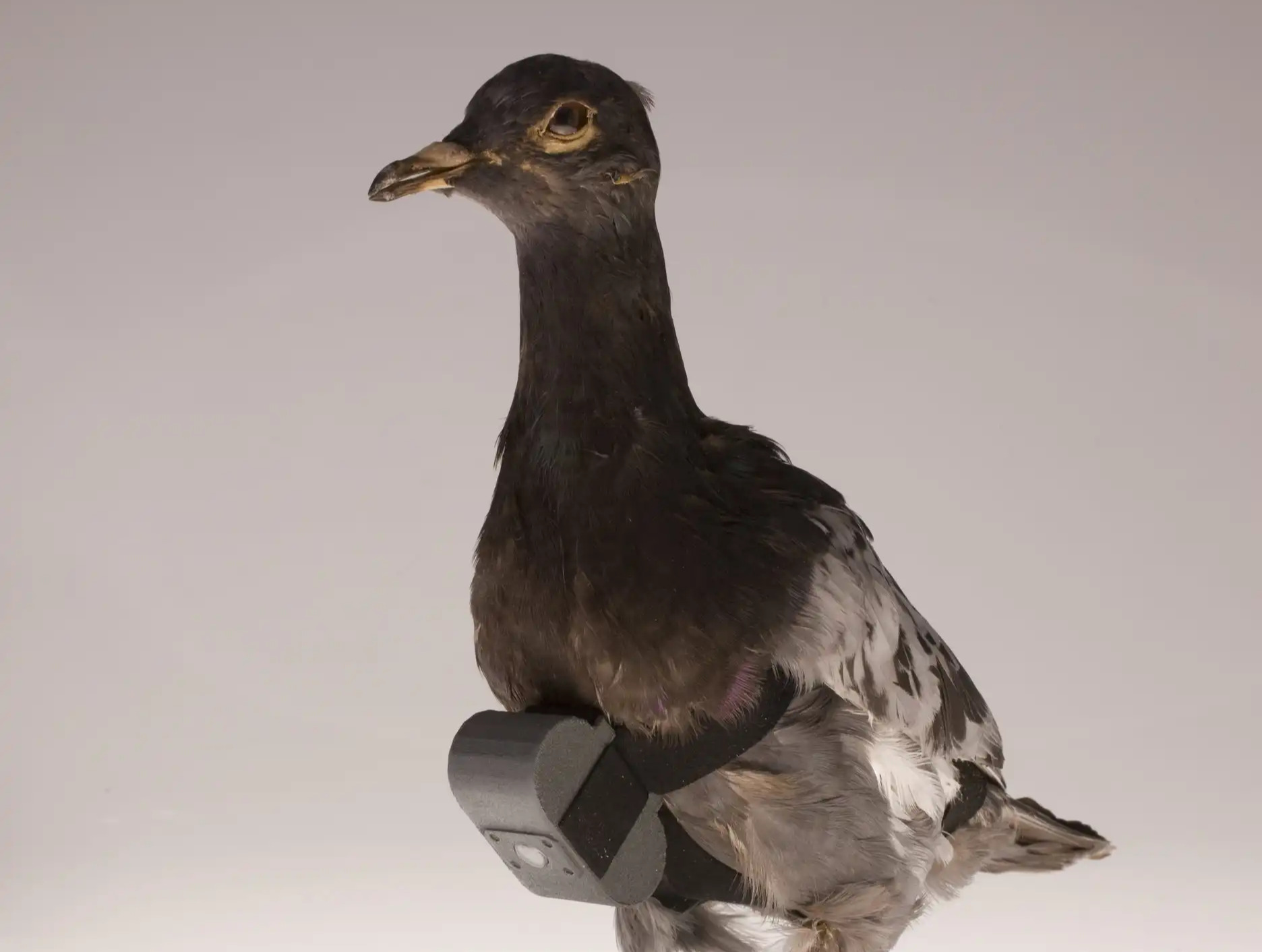Spy pigeon in CIA Museum. Photo: Central Intelligence Agency.
The world of espionage, often associated with covert operations, secret agents, and high-tech spy gadgets, has had some unexpected participants — animals. The natural abilities of animals have been harnessed for espionage purposes over the centuries. It’s not just the stuff of Hollywood make-believe.
Undercover Pigeons
During the Cold War, the Central Intelligence Agency (CIA) implemented an ingenious plan involving pigeons equipped with miniature cameras to gather covert information. The CIA’s Office of Research and Development engineered a camera so small and light that it could be carried by a pigeon. The device was attached to the bird’s body using a small harness, and the pigeon was then released over an area in a foreign country that was of interest. As the bird made its way back home, the camera would capture images.
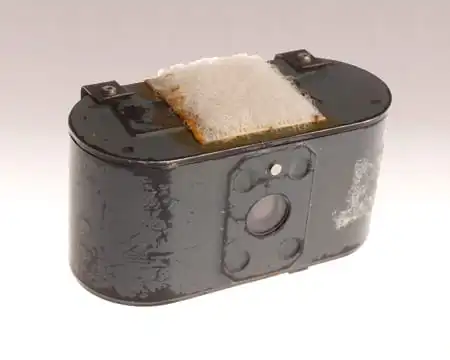
Pigeons were chosen for this task due to their ubiquity. The idea was that no one would suspect a common pigeon of being a clandestine operative capturing images for the CIA. The pigeon could blend in seamlessly among countless other birds, serving as a hidden intelligence gathering tool.
Images captured by the pigeons were taken from a few hundred feet above the target. In contrast, aircraft like the A-12 OXCART and U-2, and reconnaissance satellites like Corona, captured images from tens of thousands of feet or even miles above the target. The use of pigeons equipped with cameras provided a much more detailed view of specific areas.
The use of cameras attached to pigeons was ultimately not successful, as the birds had difficulty in flying over the precise locations that the CIA required photographs of. Aspects of the pigeon program remain classified.
Covert Felines
Starting in 1964, the CIA began to investigate the possibility of using a cat equipped with a microphone and transmitter to listen in on conversations taking place in public spaces like park benches, for example, where foreign agents might meet with their Soviet contacts that were otherwise inaccessible to eavesdropping. The idea was that the cat could approach the conversation without drawing attention. A suitable cat was chosen, and a microphone was surgically implanted in one of its ears, a tiny transmitter was inserted under its loose skin, and an antenna was integrated into its long fur. Voila, “Acoustikitty”’ was created.
The technology was successful, but the challenge was something all cat owners can relate to — the cat had its own will and was uncontrollable. During preliminary field tests, the cat wandered wherever it pleased, not where we needed it to go. Even though the program was discontinued in 1967 without Acoustikitty ever being deployed operationally, its legend persists.
One widespread legend is that the cat was abused during the implantation of the technology, resulting in a “Frankenkitty.” In reality, the devices were inserted and removed through a low-risk microsurgical procedure under the same humane conditions you’d find in any veterinary clinic, and the cat was not harmed.
Another enduring legend is that the cat was killed during a field test, struck by a taxi or a bus depending on the version of the story. However, the origin of that story is a former CIA official who confessed in 1979 that his remarks were intended as a joke. Regrettably, the public and even some Agency officers didn’t realize it was a joke, and the rumors of Acoustikitty’s unfortunate end have multiplied.
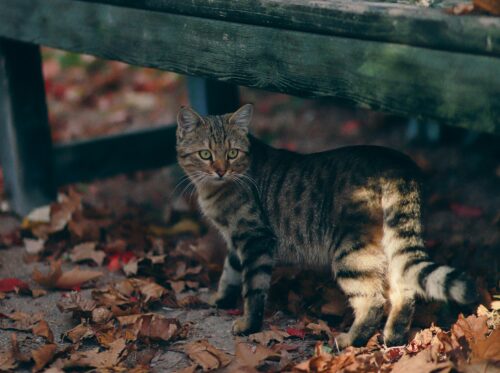
Dead Drop Rats
Dead drops serve as a common method of communication employed by CIA agents and their field assets, particularly in areas with high counterintelligence where face-to-face meetings pose too much risk. The process involves a CIA agent placing a message or object into a hidden container, which is then left at a predetermined location known as a dead drop for their asset to discover. The same can be done in reverse. When fabricating a dead drop concealment device, the goal is to ensure it’s either so ordinary that it blends into its environment or so repulsive that no one would consider picking it up. A dead rat, for instance?
During the Cold War, the CIA’s Office of Technical Services believed rats could serve as excellent concealment devices. They treated the rat’s body with a preservative, opened it up, and created a hollow space where agents could hide items such as money, messages, or even film. The rat was then sewn back together, left at a prearranged dead drop location, and retrieved by the asset.
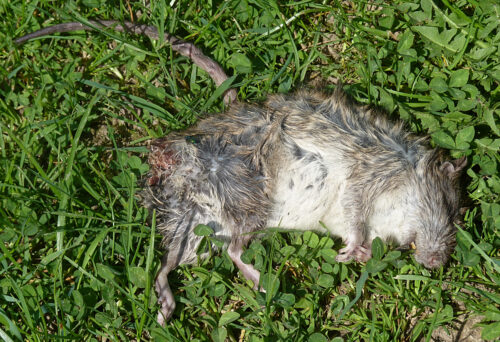
While the CIA scientists correctly assumed that humans would find dead rats repulsive and steer clear, they overlooked the fact that not all creatures share this sentiment. Cats, in particular. During the testing phases, the rats disappeared, having been snatched up by stray cats.
Unwilling to abandon the plan, our scientists devised an innovative solution: they attempted to deter the cats by soaking the rats in substances with unappetizing scents, like hot sauce and cayenne pepper.The ultimate cat repellent turned out to be wormwood oil. CIA officers would douse the rats in wormwood oil before leaving them at the dead drop locations, successfully avoiding any unexpected encounters with opportunistic feline thieves.
This wasn’t the first use of dead rats by an intelligence agency. The “Explosive Rat” or “Rat Bomb” was a unique weapon conceived by the British Special Operations Executive (SOE) during World War II, intended for use against Germany. The concept involved filling rat carcasses with plastic explosives. These were then meant to be scattered near German boiler rooms, where it was anticipated they would be incinerated, potentially triggering an explosion that could cause a boiler to explode as well.
Although the explosive rats never actually saw deployment, as the Germans intercepted the initial consignment, the operation was still deemed successful by the SOE. This was because the Germans expended significant resources in their search for additional booby-trapped rats.
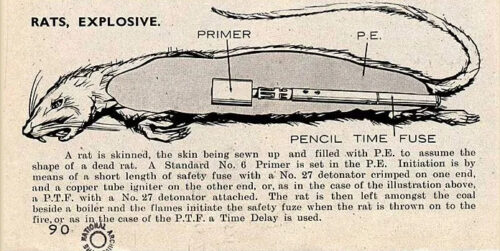
Ravens and Other Animals
Ravens have also been used in intelligence operations. In one instance, a raven was trained to transport a piece of gray slate that actually housed an electronic transmitter powerful enough to pick up a conversation. The slate was placed on a window ledge by the raven, and the raven would fly away, leaving the slate behind.
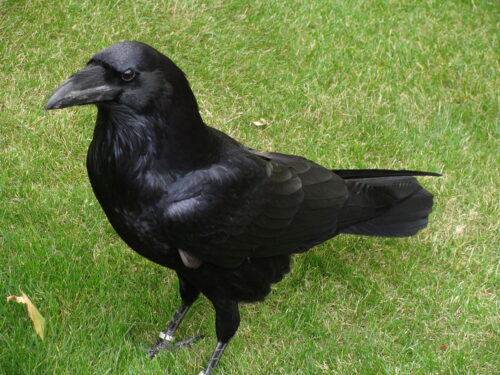
In addition to birds and cats, other animals have been used in espionage. For example, the U.S. Navy Marine Mammal Program (NMMP) is an initiative overseen by the U.S. Navy that investigates the potential military applications of marine mammals such as dolphins and sea lions. Dolphins are known for their intelligence and agility, making them ideal for such tasks.

In Conclusion
Animals have helped intelligence agencies perform a variety of critical duties. These examples demonstrate the incredible innovation and creative thinking that characterizes the field of espionage. While many of the animal programs studied by intelligence agencies were never deployed operationally — or failed for a variety of technical, logistical, or behavioral reasons — they collectively demonstrate the potential of animals in intelligence operations.
Resource
Central Intelligence Agency
CIA.gov

